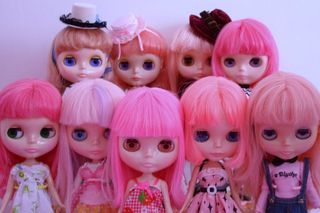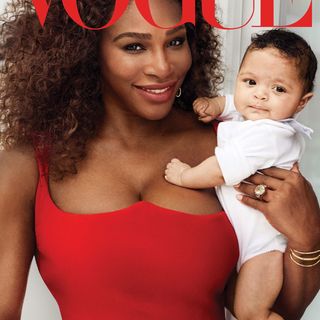
Pink and Blue Toys and the Gendering of Play
One of the primary targets of the gender-neutral parenting movement has been toys. Parents have issued a strong challenge to how toys are categorized and what colours they come in — so strong as to have effected la...

One of the primary targets of the gender-neutral parenting movement has been toys. Parents have issued a strong challenge to how toys are categorized and what colours they come in — so strong as to have effected large-scale changes by some retailers. It makes sense; since play is how small children learn, targeting the tools of their learning is a logical step in mitigating damaging gendered socialization before it takes root.
Toys for small children — toddlers to preschoolers — are an especial concern, since children at this age are first becoming aware of gender differences, and then rigidly adhering to them. Children this age crave categorization; as they engage with and analyse the world more actively and autonomously than ever before, labels help them make sense of a big, confusing mess. Children gain the developmental ability to relax this mindset as they grow older, but whether and to what degree they do might very well depend on the framework that’s been laid; gender is binary, and certain things — like the toys boys and girls play with, and the colours those toys come in — are binary, too.
Yet, the pink and blue paradigm that distinguishes little girls from little boys the world over, may not as firmly ingrained in children’s consciousness as it is in parents’. A small study out of the University of Hong Kong found it was just as easy to get preschool children to associate yellow and green with girls and boys respectively, which influenced their choice in toy; little girls gravitated to yellow toys, while little boys gravitated to green. (The researchers controlled for the children’s pre-existing preferences for yellow and green, so the resulting difference in choice strongly suggests a causal effect of the gender labeling of colours.)
All this, combined with research that suggests actual, biological differences in the way boys and girls play, raises the question: Even if we get rid of the pink-and-blue divide, might another color binary arise to take its place?
How boys and girls play differently
Part of what complicates the gender-neutral play movement is the fact that baby boys and girls do play differently, to a certain extent. Broadly, girls gravitate to toys and activities that build social and verbal skills, while boys are drawn to mechanised pursuits that build spatial skills. And this divergence emerges before children are aware of gender — as early as nine months, according to one recent study.
Scientists have linked these differences to biological factors, namely hormones, explains Debra W. Soh, a sexual neuroscientist at York University in Toronto, for the Los Angeles Times. Other research has found that girls who are born with congenitally higher levels of testosterone (the ‘male sex hormone’ present in both men and women, but naturally higher in men) tend to prefer the same toys as boys, despite encouragement from parents to play with stereotypical girl toys.
Which is all to say — if boys and girls are naturally drawn to different toys and activities, then what does colour matter?
Assigning colours a gender matters
It matters because of the rest of the findings from the Hong Kong study: that children in the control group, who received no priming to associate colours with gender, expressed no desire for any colour toy, but happy played with whatever toy they chose based on its function, rather than gender-associated colour. Kids might crave categorization, but they don’t miss it when it’s not there.
“Even though hormonal or genetic factors predispose boys and girls, as groups, to differ in their play preferences, the extent to which boys and girls show these differences are likely intensified by gender labels, marketing, etc. that may be quite unique to modern human society,” say Wang Ivy Wong and Icy Sui Ping Yeung, the authors of the study published in Sex Roles. “Different types of toys promote different abilities (e.g., boy-typical toys are associated with spatial abilities and girls’ toys may be associated with social abilities), but children are easily discouraged to play with toys that are stereotyped to be ‘gender-inappropriate.'”
In other words, just because girls, broadly speaking, might gravitate to dolls, doesn’t mean they never want to play with building blocks (and vice versa for boys) — but gendered toy colours might put them off.
Wong and Yeung’s study also speaks to the potential implications of this. Their team also tested whether using gender-coded colours in toys affects how well children play. The children who were told yellow is for girls and green is for boys were given puzzles in both colours to complete. While puzzle colour didn’t affect the children’s performance, the mere exposure to gendering did; boys outperformed girls regardless of puzzle colour, while in the control group, no performance difference emerged.
A case against pink and blue
Soh, in her article, concludes that “biology matters”: “… the scientific reality is that it’s futile to treat children as blank slates with no predetermined characteristics.” But Wong and Yeung argue their findings mean that can’t be the last word on gender-neutral play or parenting.
“Having some biological underpinning does not mean an outcome is fixed or the best desirable,” they say. “Life experiences, cognitive factors, cultural environment, and even the immediate environment can sometimes bring significant changes to outcomes we assume to be heavily biological. Our study demonstrates one such mechanism — that gender labels and colors can change children’s play preferences and even performance.”
By offering all toys in a variety of colours, parents (if not manufacturers) can remove one more constraint on children’s choices and, instead, open one more door. And if new colour associations are made in place of pink and blue by children who crave categorization, at least they’ll be making these associations themselves, through their own preferences and observations. And in the subtlest ways, the framework changes: letting kids learn that colour exists on a spectrum, might set them up to better embrace gender on a spectrum, too.
Lila reports on health and science news for The Swaddle. She has loved biology ever since she dissected her first frog in eighth grade, and now has a keen interest in examining human behavior. She also loves animals and takes at least one adventure a year through rural India. Oh, and she bakes a mean German coffee cake.
Related


Aziz Ansari and the Black and White (and Grey) of Modern Romance
